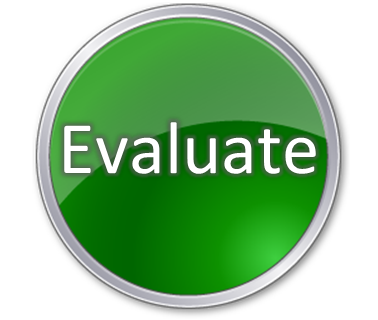
Evaluate Solutions
Tools to help you weigh your alternatives.
Priorities & Values
Define your priorities and review your values.
Priorities: Select and rank your priorities.
Values: Ensure that your thinking serves your values.
Potential Problems
Examine your solutions for potential problems.
Time Framed Consequences: Observe the consequences from different time frames.
Bullet Proofing: Recognize the vulnerabilities of your solutions.
Negative Brainstorming: Examine your solutions for potential failures.
Solutions Effect - Fishbone Diagram: Diagram the side-effects of your solutions.
Potential Problem Analysis: Analyze your solutions for potential problems.
Help or Hinder: Identify what might help or hinder your solutions.
Force Field Analysis: Understand the forces that drive or restrain your solutions.
Contradiction Analysis: Analyze the contradictions inherent in your problem.
What If? Analysis: Assume that future outcomes have already happened and identify their impacts.
High Impact / Low Probability Analysis: Assume an unlikely outcome has happened and determine its impacts.
Pre-Mortem Analysis: Assessment of how a plan, judgment, or decision could go spectacularly wrong.
Devil's Advocate: Present the best possible case against a proposed plan.
Analytical Evaluations
Evaluate your solutions using analytical techniques.
Pros, Cons, and Interesting: Evaluate the good, bad, and interesting points of your solutions.
Progressive Hurdles: Create a short list from a large number of possible solutions.
Pareto Analysis: Identify the most important parts of your problem and determine their severity.
Paired Comparison Analysis: Rank your alternatives by comparing them in paired sets.
Grid Analysis: Rank your alternatives.
Hypothesis Testing Matrix: Create a matrix for testing hypotheses.
Analysis of Competing Hypotheses: Computer program for analyzing multiple hypotheses.
Two-Sided Issues
Examine two solutions side-by-side.
Parallel Arguments: Examine each point side-by-side.
Agree, Disagree, and Irrelevant: Compare areas of agreement, disagreement, and irrelevance.
Personal Gains and Losses
Record your expected personal gains and losses.
Personal Gains and Losses: Determine expected personal gains and losses for each of your solutions.
Stakeholder Analysis
Examine the stakeholders involved in your solutions.
Stakeholder Analysis: Examine the stakeholders involvement in each of your solutions.
Commitment Chart: Determine the minimum stakeholder commitment required to succeed.
Decision-Making Methods
Methods for making choices.
Easy Way Out: Choose the easiest way out, then justify it.
Spell Out the Reasons: Choose each alternative, then justify it.
Give Up What?: Choose each alternative, then knock it.
Ideal Solution: Rank alternatives by their nearness to the ideal solution.
Best Home: Examine the best home for each alternative.
When Does It Become Unattractive: Find out when each alternative becomes unattractive.
Well-Being of the Whole: Rank alternative by their contribution to the well-being of the whole.
Fear, Greed, and Laziness: Examine the influences of fear, greed, and laziness on each of your alternatives.
Random: Choose at random.
Stand Pat: Consider doing nothing.
Defer Decision: Examine the reasons for deferring your decision.
Final Decision: Make your final choice.
Navigation
Navigation - Toolkit: All the tools listed on one page.
